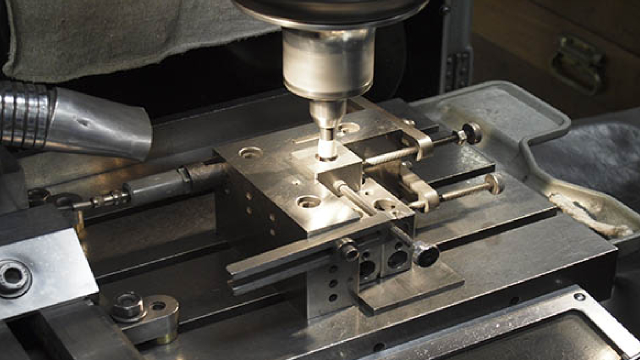Exploring the World of Small-Cap Value Investing: A Closer Look at AVUV
Small-cap value investing has long been a favorite strategy among seasoned investors, offering the potential for outsized returns through the identification and acquisition of undervalued small companies. One such fund that has garnered significant attention is AVUV, a small-cap value fund that boasts impressive statistical credentials and a strong track record.
AVUV’s Favorable Statistics
AVUV’s favorable factor regression statistics are a testament to its value investing approach. Factor regression is a statistical method used to identify the relationship between specific factors and the performance of an investment. In the case of AVUV, the fund’s value factor has consistently outperformed the market. This is evidenced by its high alpha, which measures the fund’s ability to generate returns above the benchmark index, and its low beta, which indicates its lower volatility compared to the market.
Asset Correlations
Another area where AVUV shines is in asset correlations. Correlations measure the degree to which two assets move in relation to each other. A low correlation between a fund and the broader market is desirable as it indicates that the fund’s performance is not solely driven by market movements. AVUV’s low correlation to the S&P 500 suggests that its returns are derived from the specific investments it holds, rather than market trends.
Strong Total and Risk-Adjusted Returns
AVUV’s strong total and risk-adjusted returns further solidify its position as a top small-cap value fund. Total returns refer to the fund’s overall performance, including both capital appreciation and income. Risk-adjusted returns, on the other hand, take into account the level of risk taken to achieve those returns. AVUV’s superior risk-adjusted returns, as indicated by its better Sharpe ratio, suggest that it is able to generate higher returns for each unit of risk taken.
Recent Underperformance and Attractive Valuation
Despite recent underperformance, AVUV’s valuation remains attractive. The fund is currently trading at a fraction of the S&P 500’s multiple, suggesting potential for future gains. This discount to the broader market could be attributed to temporary market conditions or a mispricing of the underlying assets. Regardless, it presents an opportunity for investors looking to capitalize on the potential value of small-cap stocks.
Historical Performance of US Small Cap Value
Historical data supports the potential of small-cap value investing, with US Small Cap Value consistently outperforming US Large Cap. Over the past 30 years, US Small Cap Value has delivered a Compound Annual Growth Rate (CAGR) of 13.33%, compared to US Large Cap’s CAGR of 10.42%. Moreover, US Small Cap Value has a better Sharpe ratio, indicating superior risk-adjusted returns.
Impact on Individuals and the World
For individuals, investing in AVUV or other small-cap value funds could lead to potentially higher returns and a more diversified portfolio. Small-cap stocks are often less correlated to the broader market, which can help reduce overall portfolio risk. Additionally, investing in undervalued small companies can provide exposure to emerging industries and innovative technologies, potentially leading to significant long-term gains.
At a global level, the continued outperformance of small-cap value could have significant implications. It could lead to a reallocation of capital from large-cap stocks to small-cap stocks, potentially driving up prices and increasing economic activity. Furthermore, the success of small-cap value investing could encourage more investors to adopt a value-oriented approach, leading to a more efficient and effective capital market.
Conclusion
AVUV’s favorable factor regression statistics, low asset correlations, and strong total and risk-adjusted returns make it a top small-cap value fund. Despite recent underperformance, its attractive valuation and the historical outperformance of small-cap value suggest potential for future gains. For individuals, investing in AVUV or other small-cap value funds could lead to higher returns and a more diversified portfolio. At a global level, the continued success of small-cap value investing could drive up prices and increase economic activity, potentially leading to a more efficient and effective capital market.
- Small-cap value investing offers the potential for outsized returns through the identification and acquisition of undervalued small companies.
- AVUV, a small-cap value fund, boasts impressive statistical credentials and a strong track record.
- AVUV’s value factor has consistently outperformed the market, as evidenced by its high alpha and low beta.
- AVUV’s low correlation to the S&P 500 suggests that its returns are derived from the specific investments it holds, rather than market trends.
- AVUV’s strong total and risk-adjusted returns further solidify its position as a top small-cap value fund.
- Despite recent underperformance, AVUV’s valuation remains attractive, trading at a fraction of the S&P 500’s multiple.
- Historical data supports the potential of small-cap value investing, with US Small Cap Value consistently outperforming US Large Cap.
- Investing in AVUV or other small-cap value funds could lead to potentially higher returns and a more diversified portfolio for individuals.
- The continued success of small-cap value investing could drive up prices and increase economic activity, potentially leading to a more efficient and effective capital market.





